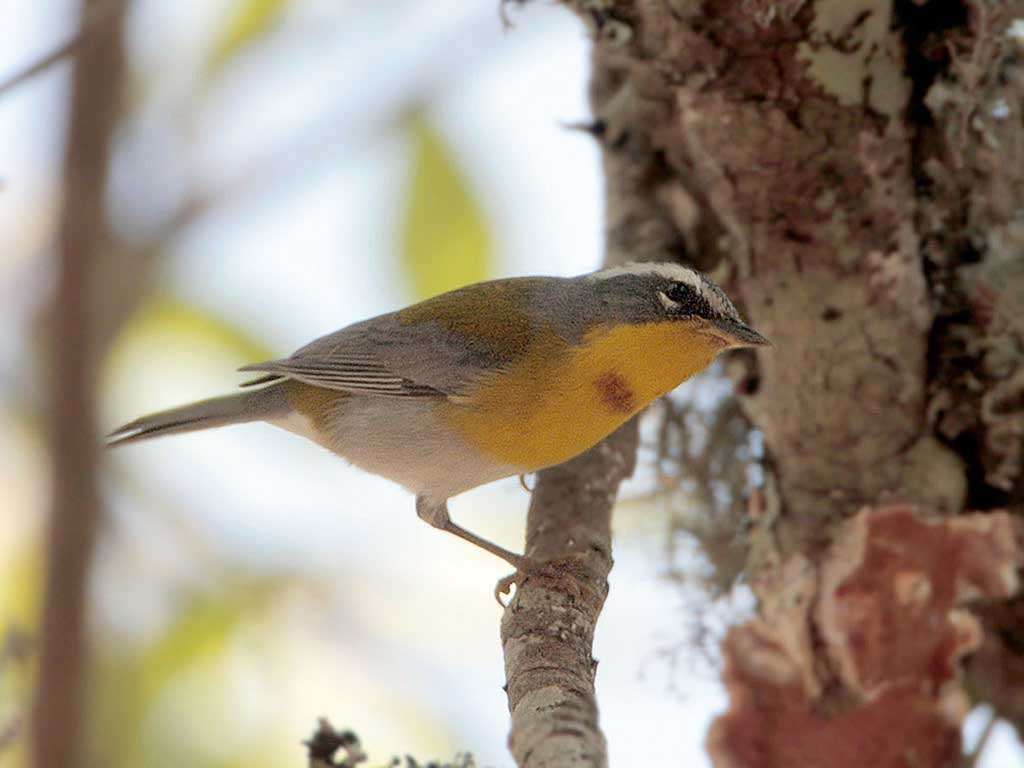The Crescent-chested Warbler is very rare in the United States, a few records for Arizona and Texas.
On this page
Description of the Crescent-chested Warbler
BREEDING MALE
Yellow underparts, a gray head, and greenish back. Broad white line over the eye.
Chestnut crescent on its breast.
Female
Similar to male but chestnut crescent is paler.
Seasonal change in appearance
None.
Juvenile
Similar to adult females bit crescent reduced or absent.
Habitat
Tropical and sub-tropical forest areas. When in the U.S. seen in pine-oak woodlands.
Diet
Insects, some fruits and berries.
Behavior
Forages by jumping through twigs and foliage, picking food from the underside of leaves, and hanging beneath leaves.
Range
Mexico and Nicaragua. Population status unknown.
Vocalizations
A buzzy Zit-zit-zit-zit-zit-zit-zit.
Similar Species
- Somewhat similar to Northern Parula. Look for white bar over eye and plain wings without wingbars.
Nesting
Nests atop grassy tussocks or sheltered by a hill or bank near the ground. Nest made of moss, grass, conifer needles, and fine materials to line the nest.
Number: Usually 3.?
Color: Whitish in color.
Incubation and fledging:
– The young hatch at about 12-14 days?
– Young fledge at about 8-10 days.


